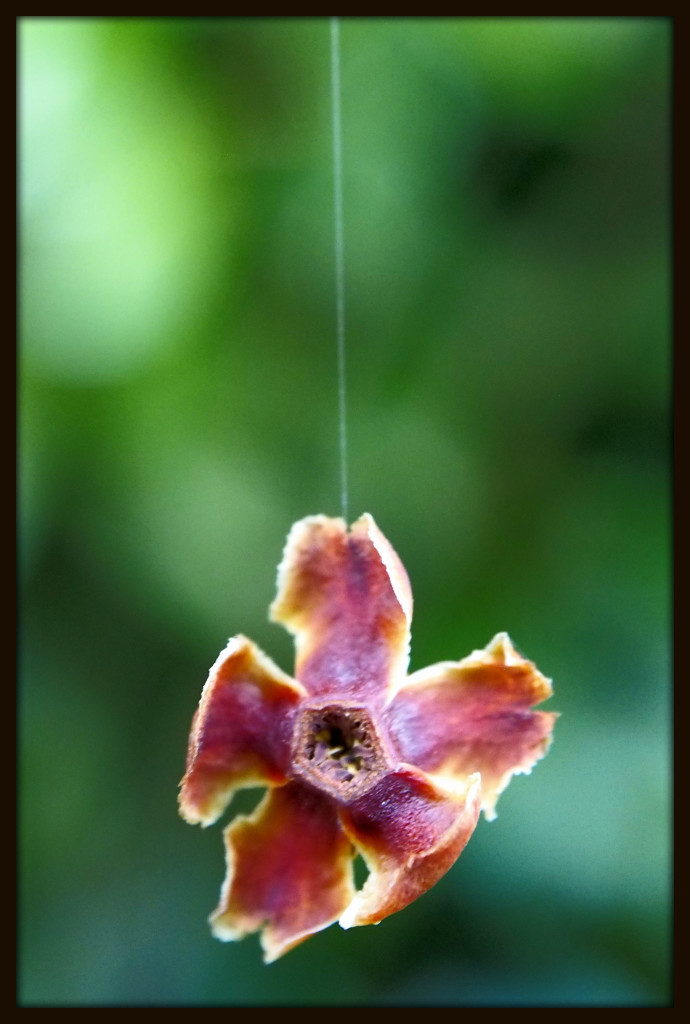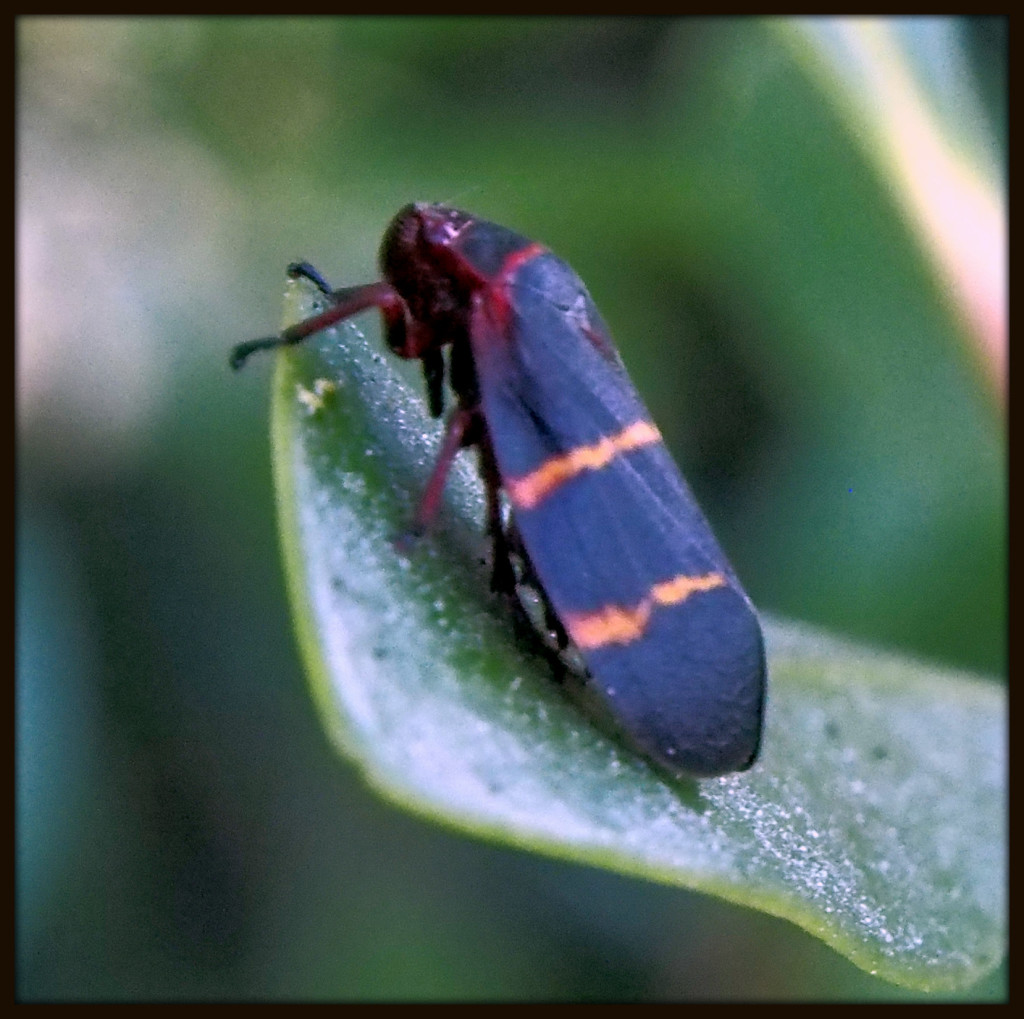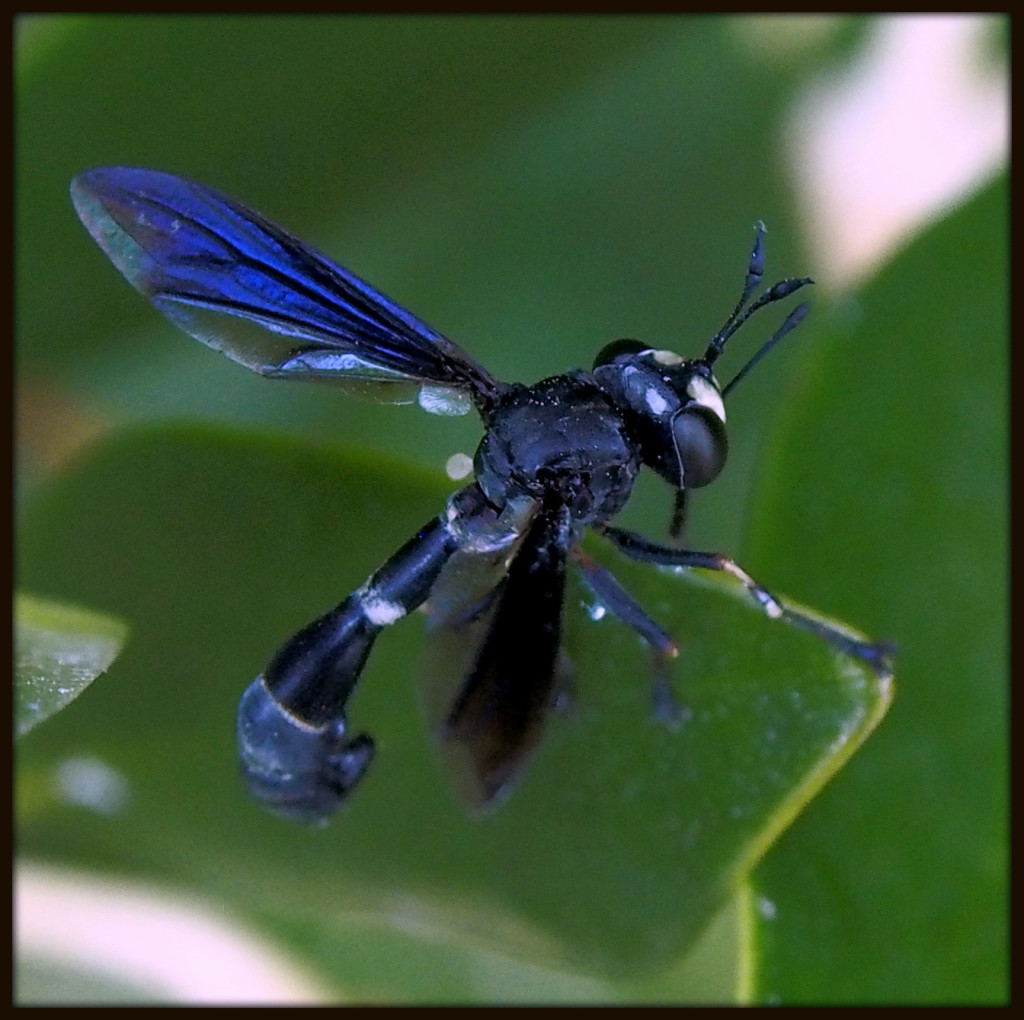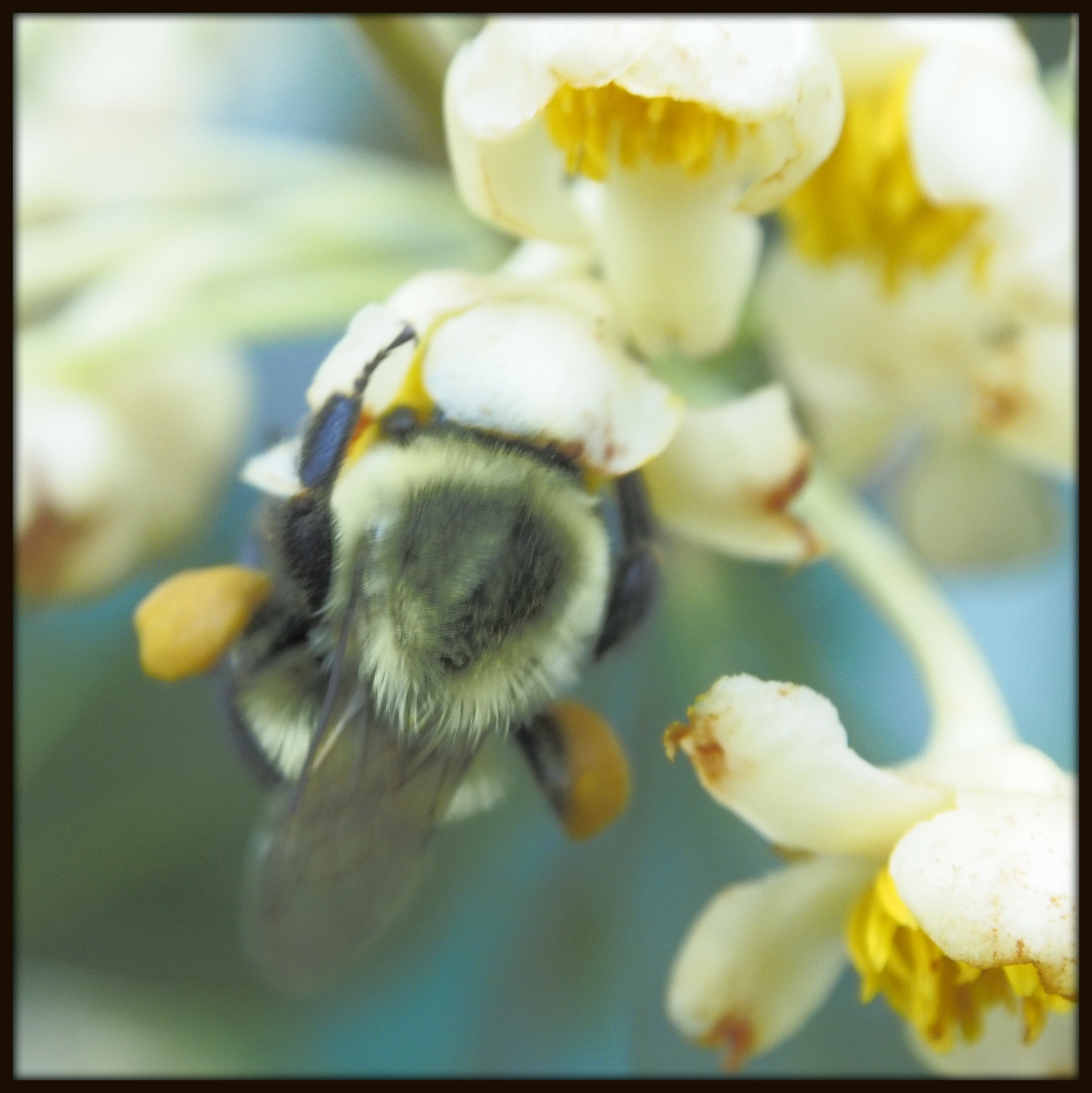Summer is here at last, and it is party time at the Cleyera on Piney Woods Church Road! Come on out and see what all the buzz is about! The decor is sheik yet seasonal, consisting of Cleyera flowers in bloom,

accompanied by spent blossoms, tastefully arranged amid gossamer spider threads.


The blossoms are a popular hangout for guests. Abundant honeybees are busy pollinating many of the flower heads,

along with bees from the well-respected Family Halictidae, flashing thier gold at passers-by.


Among the more intimidating-looking of the party guests is undoubtedly this Virginia Flowerfly, Milesia virginiensis, which looks a lot like a yellowjacket but does not sting.


On the other end of the spectrum, the Cleyera also caters to much tinier folk, such as this quarter-inch tumbling flower beetle from the Family Mordellidae, possibly Mordella marginata.


Undoubtedly one of the Cleyera’s most dapper customers as summer gets underway is this Longhorned Beetle (Strangalia luteicornis), a well-heeled and elegant specimen of the Family Cerambycidae.



If you visit the Cleyera, it is worth watching out for the occasional riff-raff — unsavory characters such as this two-lined spittlebug (Prosapia bicincta), a common pest of turf grass and ornamentals.

The Cleyera — a great place to party, and get some serious pollinating done — but only while the flowers are blooming.



















